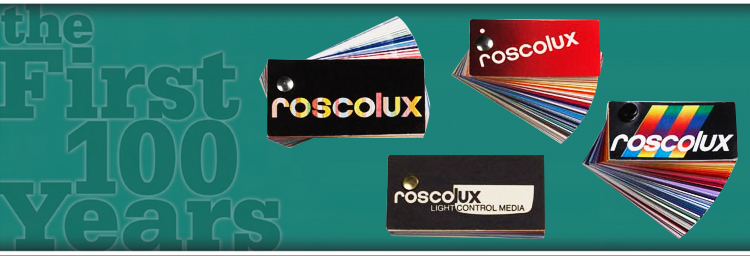In case you haven't heard - Rosco turns 100 years old this year. We dedicated a portion of our LDI booth to showcase a time-line of our First Hundred Years and exhibit some of our 'museum pieces' to highlight products from our history, our present and our future. If you didn't get a chance to visit our booth at LDI - our friends over at iSquint took a video tour of the booth with our very own Chad Tiller. The video shows some of the products that Rosco sold back in the 1910's and 1920's plus gives you a sneak peek at the new Rosco equipment that is ushering Rosco into its next 100 years.
We continue to tell the story of Rosco's first 100 Years in our Rosco Spectrum Forum below and here are a couple of images from our LDI booth that pertain to this post's subject matter - color filters.
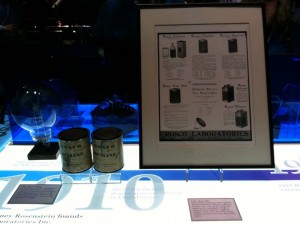 Containers of Opaline and one of our earliest advertisements
Containers of Opaline and one of our earliest advertisements
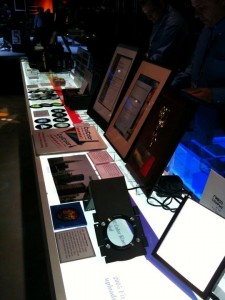
Three of our four Academy Awards
® - two of which are for color filters like CalColor, which is also shown here
In the early 1900's, professional theaters in New York primarily used colored gelatin imported from Germany on their lights. When World War I began, the supply was cut off and the producers turned to Rosco. “You’re making colored lacquer…Can’t you make it in sheets?” It wasn’t that easy, but Rosenstein convinced a chemist friend, Mac Weiner, to leave his lab position at Rockefeller University and take on the challenge. They set up Gelatin Products Company to manufacture Rosco Gelatine and we were in the business of selling gels. GPC was eventually formally merged into Rosco and Mac and his son Sy ran Rosco’s filter plant until they each passed away years later.
 Gelatine sheets advertisement
Gelatine sheets advertisement
The color range started small and new colors were added as needs arose or sometimes it was just serendipity. One day in 1919, Rosenstein had checked out a run of gel and decided that it was off-color and unsaleable. Louis Hartmann, David Belasco’s electrician, came in and looked at a sheet of this unsaleable, salmon-amber. He asked if he could take a couple of sheets and returned the next day to get some more. No one knew what he was talking about. “It was here yesterday,” he said, “that bastard amber.” Well, it had all been remelted and now Hartmann was rhapsodizing about how wonderful it was on skin tones. Fortunately, he still had a sheet and Mac was able to recreate the accident - Bastard Amber. Over the years, Bastard Amber has become one of Rosco’s largest selling colors… Serendipity.
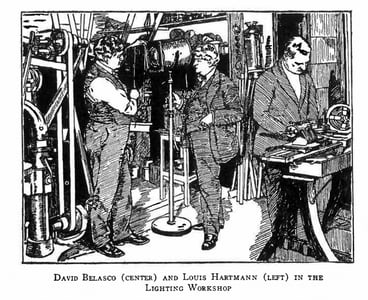
Rosco introduced “Roscolene” in 1955, and it is still offered today. Initially it was a surface-coated filter, but eventually it became an extruded, body-colored filter. Unlike Cinemoid, the other plastic lighting filter that was only available in sheets, Roscolene is produced in master rolls so it is offered in sheets and rolls. The Roscolene color range was based on the Rosco Gelatine range so the prefix 2 for gel becomes 8 for Roscolene (226 red, 826 red).
By 1959 the numbering system was totally unworkable. The red-pink section went 15, 16, and 17 red then 60, 112, 113 and 114 pink. As daunting a task as it was, we decided we had to go to a new numbering system. We went to 201-283 for gel and 801-883 for our new Roscolene range of colors manufactured out of PVC plastic. Everyone went along with the change with one notable exception, Rudy Kuntner, Master Electrician at the Metropolitan Opera, with his characteristic German intransigence, held firm. Until his retirement years later, he ordered 71 Bastard Amber and 28M Purple.
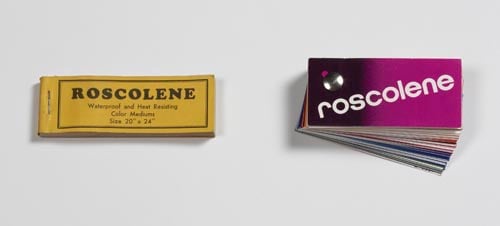 Past Roscolene swatchbooks
Past Roscolene swatchbooks
Colortran had introduced a polyester-based medium, “Gelatran” in the late 60’s, so in 1970 Rosco launched “Roscolar,” a range of filters made of coated Mylar polyester base similar to Lee Filters. It filled the void while the next generation was being developed. In January of 1976 Rosco introduced “Roscolux,” a body-colored polycarbonate color filter. The line was rebranded “Supergel” for marketing overseas. The technology apparently was very advanced since today, 34 years later, several people still coat polyester the way Rosco began doing in 1970, but no one else body-colors polycarbonate. Roscolux/Supergel is now the largest selling color filter medium in the world.
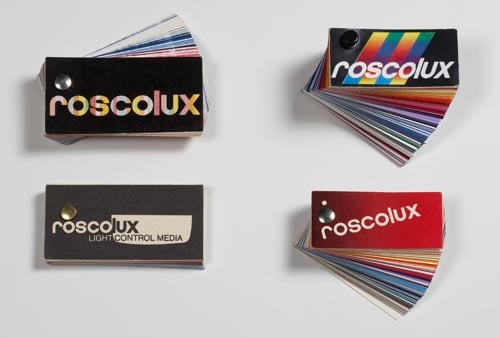 History of Roscolux swatchbooks.
History of Roscolux swatchbooks.
Coming up in part three: Stan Miller - 50 Years at the Helm

